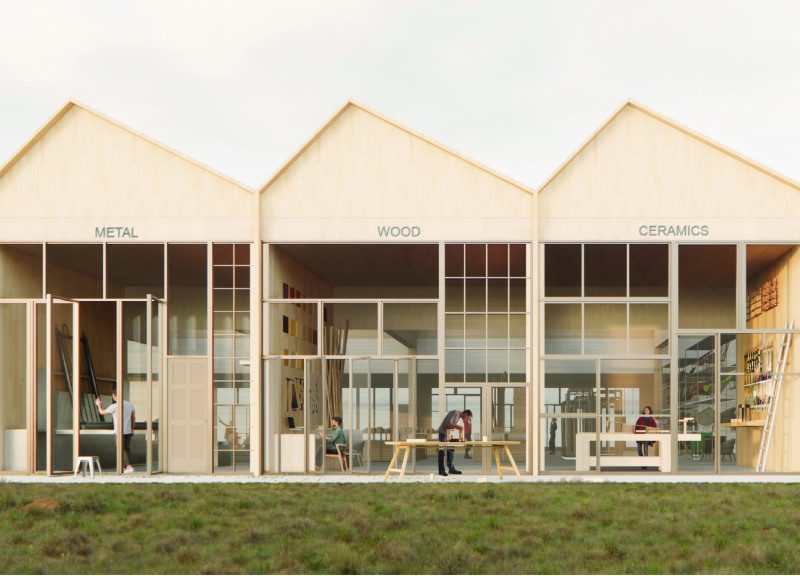5 key facts about this project
Embarking on an exploration of the project reveals a unified vision that intertwines basic architectural principles with innovative design solutions. The building's form is carefully crafted, showcasing a balance between simplicity and complexity. This duality reflects an inherent understanding of spatial dynamics and human interaction with the built environment. The architectural layout is designed to optimize natural light and airflow, promoting sustainability while enhancing the overall user experience.
Functionally, the project serves as a multifunctional space, accommodating various activities and interactions. The design cultivates an environment where social engagement and individual needs can coexist seamlessly. By incorporating flexible spaces, the architecture allows for adaptability in usage, fostering a dynamic atmosphere that can evolve over time. This versatility is again underscored in the layout, which facilitates movement and flows naturally from one area to another, encouraging exploration and interaction.
The materials chosen for this project further amplify its conceptual clarity. Employing a palette that includes sustainably sourced timber, exposed concrete, and glass not only reinforces the aesthetic narrative but also emphasizes durability and resilience. The juxtaposition of the warmth of wood against the coolness of concrete speaks to the project’s intention to create inviting yet robust spaces. Glass elements strategically placed throughout the design invite transparency, blurring the boundaries between the interior and the exterior, and allowing for an immersive experience with the surrounding landscape.
Moreover, the project stands out through its commitment to environmental sensitivity. The integration of green roofs and walls not only contributes to the building’s ecological footprint but also enhances its visual allure. These elements promote biodiversity and support the local climate, embodying a responsible architectural ethos. The project suggests a dialogue with nature, encouraging users to connect with the environment while remaining immersed in a modern setting.
The unique design approaches observed within the project draw from a deep understanding of architectural context and user interaction. The interplay of volumes creates interesting spatial relationships, offering various perspectives and experiences throughout the structure. Each space is intentional, reflecting a profound consideration for human-scale design. Careful attention to detail is evident in the finishes and fixtures, catering to both functional and aesthetic needs without overshadowing the core architectural identity.
As visitors navigate through the project, they are likely to appreciate the integration of technology and timeless design principles. Smart building systems ensure efficiency while supporting occupants' comfort—a testament to how modern advancements can coexist with traditional architectural values. This synergy elevates the user experience, creating an environment that is not only liveable but also enjoyable.
In summary, this architectural project offers a compelling narrative that marries innovative design with environmental consciousness, all while maintaining an acute awareness of user interaction and functionality. Interested readers are encouraged to explore further details about the architectural plans, sections, and overall design ideas that shaped this project. Engaging with these elements will provide a deeper insight into the intricacies and intentions behind this distinctive architectural undertaking.


 Nicole Vettore
Nicole Vettore 




















